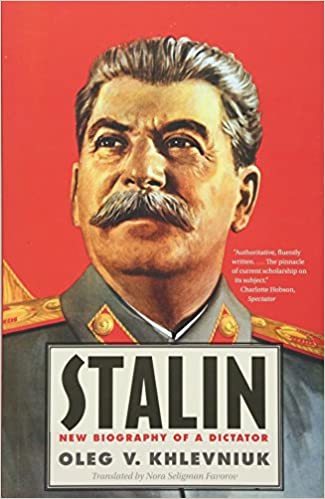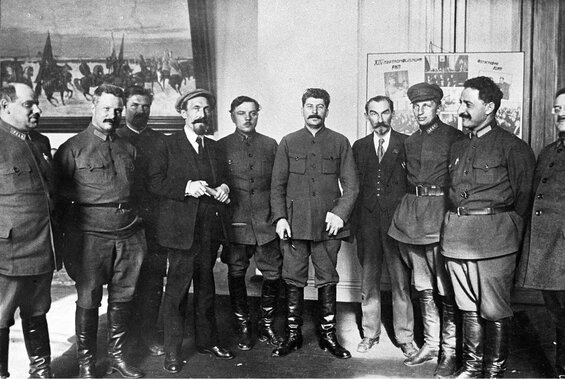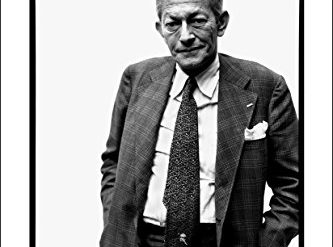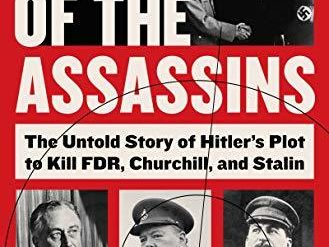
Leon Trotsky, Isaac Deutscher, Robert Service, Stephen Kotkin, Robert Conquest, and Simon Sebag Montefiore have all produced widely-read accounts of Joseph Stalin’s life. They’re among scores of others. In fact, Amazon dredges up more than 1,000 titles in response to the query “Stalin biography.” Why, then, is yet a new biography of the man necessary? The Russian historian who wrote it explains that “in today’s Russia . . . Stalin’s image is primarily being shaped by pseudo-scholarly apologias.”
Rejecting an “alternative” Stalin
This “large-scale poisoning of minds with myths of an ‘alternative’ Stalin” prompted him to write his sixth book on the man. And Oleg Khlevniuk may well be the world’s leading expert on Joseph Stalin, having dedicated more than two decades to studying his life. His “new biography,” published in 2015, benefits from the opening of Soviet archives and his own seemingly obsessive pursuit of other original sources. While the book is not an easy read, it may be as close to an authoritative and well-balanced picture of the man who ruled the USSR as a dictator from 1928 to his death in 1953.
The harsh reality of Stalin’s rule
To the West, Joseph Stalin was a monster who was responsible for the deaths of tens of millions of Soviet citizens. Khlevniuk does not shy away from this reality. “Official records show,” he writes, “that approximately eight hundred thousand people were shot [on Stalin’s orders] between 1930 and 1952.” But that number only hints at the wider truth. “Between 1930 and 1952, some 20 million people were sentenced to incarceration in labor camps, penal colonies, or prisons. During that same period no fewer than 6 million, primarily ‘kulaks‘ and members of ‘oppressed peoples,’ were subjected to . . . forced resettlement to a remote area of the USSR. “On average, over the more than twenty-year span of Stalin’s rule, 1 million people were shot, incarcerated, or deported to barely habitable areas of the Soviet Union every year.”
And these numbers don’t include the seven to ten million people who died in the Great Famine in Ukraine—or the twenty-seven million people who lost their lives in the country in World War II, many of them needlessly as a result of blunders by Stalin.
Stalin: New Biography of a Dictator by Oleg V. Khlevniuk (2015) 461 pages ★★★★☆

The death of Stalin is a linchpin for the story
At its core, Khlevniuk’s Stalin is a conventional political biography, chronologically ordered. But its six chapters alternate with interludes that use Stalin’s death and the events surrounding it as a device to explore the dictator’s family life and the way he conducted himself on a daily basis. The book opens on the evening of February 28, 1953, at Stalin’s home near Moscow. The five men who govern the Soviet Union—ostensibly as a collective known as “the Five”—are at dinner. As the author explains how Stalin relates to them, we learn how terrified all four of the others are. But this is the last time they will meet for dinner.
After they leave, sometime in the early hours of the morning of March 1, the seventy-four-year-old Stalin suffers a devastating stroke that leaves him immobile and alone. Subsequent interludes reveal how he lay dying for hours, with everyone in his entourage afraid to intrude. It’s a brutally effective portrayal. And Khlevniuk’s account proceeds to relate the great speed with which the men around Stalin moved to undo many of the harsh and counterproductive policies he’d pursued.
Nearly four decades to rise to unchallenged control
In the main body of the book’s text, Khlevniuk describes—sometimes in mind-numbing details—Stalin’s twenty-year rise to a position as “one of Lenin’s closest associates” and the power politics that consumed the Soviet leadership for years after Lenin’s death in 1924. Most accounts of Soviet history report that Stalin had clawed his way to unchallenged command of the Party and the government by 1928. But the author suggests that time didn’t arrive until 1937. The Great Purge (or Red Terror) eliminated any hint of potential opposition as Stalin methodically murdered his Bolshevik colleagues, one after another, only to replace them with younger men who were beholden only to him.
That shift to inexperienced and sometimes incompetent men sorely tested Stalin’s ability to respond once Nazi Germany attacked in July 1941. Khlevniuk’s account explains in great detail in his depiction of the disbelief, shock, and inaction with which Stalin and his close associates greeted the arrival of the invading German armies. He writes, “There is no serious basis for revising the traditional view that Stalin was fatally indecisive and even befuddled in the face of the growing Nazi threat.”
A balanced portrayal of Stalin’s life
Most accounts of the life of Stalin imply that his paranoid personality and lack of compassion stem from the brutal circumstances of his upbringing. He is commonly portrayed as an ignorant thug. Khlevniuk dispels that notion. He writes, “By many measures, Stalin’s childhood was ordinary or even comfortable.” His mother could read and fiercely pursued all possibilities for him to receive an education. Because he was a “model student” and his mother used all the resources at her disposal, Stalin benefited from ten years of religious education, including four in a seminary—he was studying for the priesthood—and gained a lifelong love of reading.
He was also well-traveled early in his life, visiting Stockholm, London, Paris, Berlin, Vienna, and Krakow. Apparently, too, he could read English, French, and German to some extent. For a time before the Revolution, he was the editor of Pravda. And he had a prodigious memory. The man was formidable. In most respects, it was difficult to distinguish him from the middle-class intellectuals who predominated in the Bolshevik leadership—other than that he was just a little smarter than most.
About the author

Wikipedia notes that Oleg V. Khlevniuk (1959-) “is a historian and a senior researcher at the State Archive of the Russian Federation in Moscow. Much of his writing on Stalinist Soviet Union is based on newly released archival documents, including personal correspondence, drafts of Central Committee paperwork, new memoirs, and interviews with former functionaries and the families of Politburo members.” Stalin is his sixth book.
For more reading
You might also enjoy:
- Good books about Vladimir Putin, modern Russia and the Russian oligarchy
- Great biographies I’ve reviewed: my 10 favorites
- 20 top nonfiction books about history
- Top 10 nonfiction books about politics
And you can always find my most popular reviews, and the most recent ones, plus a guide to this whole site, on the Home Page.

























